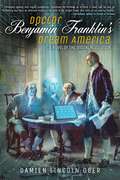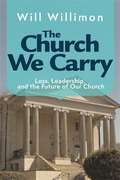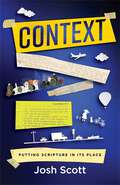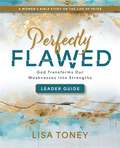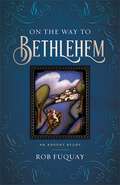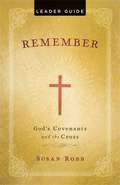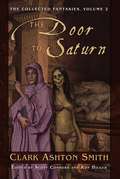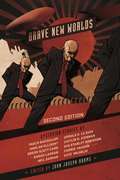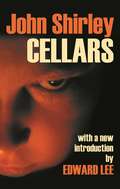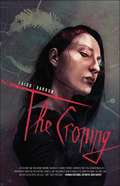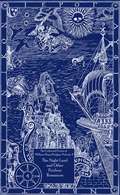- Table View
- List View
Vagabond Witness: Victor Serge and the Politics of Hope
by Paul GordonVictor Serge was the first and the greatest witness of the twentieth century. An anarchist in France, a syndicalist in Spain, a critical Bolshevik in Russia, an agent of the Comintern in Germany and Austria, an exile, Serge once said that people judged history, but they did so without knowing what really happened and who the actors really were. All his work - novels. reportage, poetry, criticism - was an attempt to show what really happened, and why. Serge never lost hope, that ordinary people would act for themselves and take control of their own lives. On the ship taking him to exile in Mexico, where he would die isolated and in poverty, he recalled, "The Russians and Spaniards among us know what it is to take the world into their hands, to set the railways running and the factories working...no kind of predestination impels us to become the offal of the concentration camps."
Doctor Benjamin Franklin's Dream America
by Damien Lincoln OberGore Vidal&’s Burr meets Neal Stephenson&’s Snow Crash in this blazingly original alt-history that weaves twenty-first century technology into a saddle-punk retelling of the American Revolution.It is 1777, in a colonial America where the internet, social media, and ubiquitous electronic communications are fully woven into the fabric of society. Hours after a top-secret Congressional sub-committee uploads the Articles of Confederation, a mysterious internet plague breaks loose in the cloud, killing any user who accesses a networked device. Seven in ten Americans are dead, the internet is abandoned. Seizing the moment, the British take control of New York and Philadelphia, scattering what little remains of the rebellion.Just when all seems lost, George Washington reappears from off-the-grid to pin the British army at Yorktown. Independence is won, but with the countryside in ruins and internet commerce impossible, the former colonies teeter on the brink of collapse. Meeting in secret, a faction of the Founding Fathers code a new error-proof operating system designed to stabilize the cloud and ensure everlasting American prosperity.Not everyone is happy with the new format. Believing the draconian regulations of the new OS a betrayal of the hard-fought revolution, Thomas Jefferson organizes a feisty, small-government opposition to fight the overreach of Washington&’s Federalist administration. Their most valuable weapon is Doctor Benjamin Franklin&’s Dream America, a new open-source social networking portal which will revolutionize representative government, return power to the people, and make Congress and the Presidency irrelevant . . .
The Christmas Letters Leader Guide: Celebrating Advent with Those Who Told the Story First
by Magrey deVegaHear from “those who told the story first.” The Leader Guide contains discussion questions and session plans for a four-week Advent study. It includes opening and closing prayers, optional activities, and session goals for each week, and is designed to be used with the book and DVD.You may or may not know the story of your birth. If you do, there is something special about hearing your origin story again and remembering how it all began for you. That’s why we observe Advent: to celebrate how it all began for us. In The Christmas Letters, Magrey deVega invites you to hear about the miracle of Christ’s birth from those who first told the story. The letters in the New Testament, known as the Epistles, contain the first attempts by the church to understand and celebrate the mystery of the Incarnation. They point us to the origins of what we believe about Jesus, fully human and fully divine. By spending time with these holy, ancient words this Advent, you’ll come to know the meaning of Christ’s coming like never before. Read the New Testament letters, Romans, 1 John, Philippians, and Colossians as your first Christmas letters of the season and find within them an invitation from God to deepen your understanding of the Incarnation and embrace a fuller commitment to Jesus Christ.
The Church We Carry: Loss, Leadership, and the Future of Our Church
by William H. WillimonBreaking faith, finding grace: wisdom for leading divided churches in divisive times.Trusted and respected leader Will Willimon explores how failures in leadership and theological vision contributed to our current denominational crisis. Through the lens of a South Carolina historic congregation, this book offers a critical analysis that will enlighten today’s congregational leaders on navigating the complexities of ministry in our uncertain future.As a retired United Methodist bishop and expert in ordained leadership, Willimon reflects on a simple-to-ask-but-complicated-to-answer question: What has become of the church that shaped his faith? Focusing on Buncombe Street Methodist Church, he examines their journey through disaffiliation to shed light on leadership challenges within our denomination, including his own role.This insightful resource provides a candid exploration of the realities of ministry today, inviting us to confront our grief and shortcomings while embracing our duty to serve Christ’s church in the present moment. Gain valuable insights from real-life experiences, learn from those labeled as “schismatic,” and discover practical strategies for effective leadership in today’s evolving church landscape.
The Angels of Christmas: Hearing God's Voice in Advent
by Susan RobbExplore the four angelic visits surrounding the birth of Jesus with Susan Robb in The Angels of Christmas, a four-week Advent study. The Angels of Christmas: Hearing God’s Voice in Advent, a four-week Advent study by Susan Robb, explores the four angelic visits surrounding the birth of Jesus with Zechariah, Mary, Joseph, and the shepherds. In this study, the reader will explore the visits and dive deep into the history of the angel Gabriel–and other angels–in the Old Testament. The Angels of Christmas uses these four angelic appearances to discuss God’s presence in history and our lives today. The messages of the angels hold meaning for listeners both then and now.
Daily Bible Study Summer 2025
by Timothy Merrill Betsy Haas Rhoda E. PrestonGrow your faith daily. Transform your life.Experience God in deeper ways by spending time in God’s Word. Daily Bible Study is the perfect resource for individuals who want to grow in their relationship with God and enhance their engagement with lessons in Adult Bible Studies. Designed to meet the needs of busy people, each daily reading includes a Scripture reference, a personal faith-related question, an explanation and application of the biblical text, and a prayer, all on one page. Available in print and eBook and as an app.Summer 2025 Theme: Living FaithThis summer, Daily Bible Study presents a series of readings supporting the theme “Living Faith.” These readings, divided into three units, lead us to consider the church, the issues within it, the wisdom God provides in dealing with these issues, and the spiritual resources God provides for us to live into the church’s mission. These daily readings come from the Old and New Testament texts and prepare us for the lessons in Adult Bible Studies.This resource, endorsed by the Curriculum Resources Committee of The United Methodist Church, offers a year-round, daily Bible study plan.
Context: Putting Scripture in Its Place
by Josh ScottExploring the Chapter Behind the Verse. Context looks at verses we know by heart but may not know the people, places, and times that give them meaning. Josh Scott delves into these well-known Scripture verses, exploring their true meanings by examining them in their original biblical context. Through this process, he unveils fresh and enlightening interpretations that are often missed when these Scriptures are taken out of context. The book can be read alone or used by small groups anytime throughout the year. Components include video teaching sessions featuring Josh Scott and a comprehensive Leader Guide, making this perfect as a six-week group study.
Perfectly Flawed Women's Bible Study Leader Guide: God Transforms Our Weaknesses into Strengths (A Women’s Bible Study on the Life of Peter)
by Lisa ToneyWe are all flawed, but God can turn those weaknesses into strengths.The Perfectly Flawed Leader Guide outlines six small group sessions complete with prayers, summaries, discussion questions, and video viewer guides. The leader guide will support group leaders of all experience levels in creating strong learning communities.In Perfectly Flawed, Lisa Toney shows how the apostle Peter’s passion and imperfections make him one of the Bible’s most loved and relatable people. Even when Peter gave up, gave in, and gave out, Jesus was there for him. Join Lisa as she follows Peter through his time with Jesus, from the beginning of Jesus’s ministry to the Resurrection and on through Pentecost when Peter begins to live into his call. Along the way, discover the raw honesty of a man who veered from staunch devotion to moments of doubt, mirroring our own human struggles.In the six-week Bible study Perfectly Flawed, we see that there is an unparalleled power Jesus gives that can only be found in our weakness. We discover the strength of Jesus that is available to each of us. Learn to persevere in your faith, live confidently, and boldly step into God’s purpose for you. See how Peter’s story is an invitation to embrace imperfection, find strength in the relentless grace of God, and discover how each one of us is perfectly flawed but still deeply loved by God.Other components for the Bible study include a Participant Workbook with daily readings and teaching video available on DVD.
On the Way to Bethlehem: An Advent Study
by Rob FuquayThe journey to Christmas begins in Rome.On the Way to Bethlehem follows the long journey to Christmas. The story begins in Rome with a decree issued from the seat of worldly power for a census, setting into motion events leading to the birth of the Savior of the world in a town that represents the very opposite of worldly power, Bethlehem. Author Rob Fuquay provides insight into the geographical and historical significance of Rome, Jerusalem, Nazareth, and Bethlehem, along with the important characters through whom the Christmas drama unfolds. You will be drawn into those places in a way that helps you experience the spiritual truths each location holds. The reflection we give in these places prepares the heart and soul to experience wonder, awe, mystery, and joy. Chapters include: Rome – A Place of Longing Jerusalem – A Place of Waiting Nazareth – A Place of Simplicity Bethlehem – A Place of Humility Components available to use this book in a small group study include a leader guide and video available on DVD.
Thrive Women's Bible Study Leader Guide: Living Faithfully in Difficult Times
by Jennifer CowartWalking in Faith…even when times are tough.In Thrive, author and teacher Jen Cowart helps women develop the habits and attitudes necessary to thrive, whatever their circumstances. Leading readers through the Book of James, a letter written about enduring hardships, she lifts up six characteristics of mature Christians. From endurance and humility to controlling our words, Jen helps participants find the divine and the practical in living faithfully.Jen’s teaching has inspired thousands of women across the country. Her authenticity inspires others to open their hearts and minds. One reviewer wrote, “Her ‘realness’ and her vulnerability just work together to open your heart to dig deeper and deeper.”Through this study, women will find inspiration and tools around six traits:Endurance – Embracing obstacles as a means to maturity.Wisdom – Using a heavenly perspective on earthly issues.Action – Living a life where actions match faith.Control – Taming the tongue.Humility – Developing the attitude of Christ.Prayer – Exercising the power tool of the faith.The Leader Guide contains everything needed to guide a group through the six-week study, including session plans, activities, discussion questions, and multiple format options.Additional components for this six-week Bible study, each available separately, are a Leader Guide and six video sessions, 8 to 13 minutes long (with closed captioning).
Adult Bible Studies Winter 2025-2026 Student
by Betsy HaasGrow your faith. Transform your life.Cultivate a deeper relationship with God through Adult Bible Studies. Each weekly lesson provides background and focal Scriptures, key verses, and doctrinally sound and relevant biblical interpretation and application, all presented in a readable font size. Annual plans provide comprehensive coverage of the Bible, including special lessons during the church seasons of Advent and Christmas, as well as Lent and Easter. They also offer suggestions for developing spiritual practices such as prayer, worship, community, and service, among others. Adult Bible Studies is a reliable companion and guide for learning and growing in the Christian faith.Winter 2025-2026 Theme: Light. Life. Salvation.For our winter quarter, Adult Bible Studies will be considering two major questions: Who is Jesus? Who are we? These lessons and Scriptures around the theme of “Light. Life. Salvation.” will build up our faith and deepen our relationship with God as our Creator, Redeemer, and Sustainer. The writer of the student book is Betsy Haas. With the help of the Adult Bible Studies Teacher/Commentary Kit and DVD, your group will come to understand that it’s not just about learning - it’s about living out biblical teachings.Visit AdultBibleStudies.com and sign up for the weekly newsletter to automatically receive the FREE Current Events Supplement and other information about these resources and more!This resource, endorsed by the Curriculum Resources Committee of The United Methodist Church, offers a year-round, weekly Bible study plan for Sunday school classes and other small groups.
Remember Leader Guide: God's Covenants and the Cross
by Susan RobbRemember the God who remembers us.The Leader Guide contains everything needed to guide a group through the six-week study, including session plans, activities, discussion questions, and multiple format options.God’s covenants throughout the Old Testament show the character of God’s promises to the people of Israel. In this book, Susan Robb leads readers through the covenants with Noah, Abraham, Moses, and David, followed by the new covenant established on Maundy Thursday. The Lenten story culminates with an examination of the cross as another example of God’s promise for a new world.Susan Robb teaches readers the basic lessons of the covenants through a mixture of biblical history and personal stories. Her pastoral character and warm tone provide a basis for understanding God’s promises through history and the role of Jesus’s passion and crucifixion in the history of the covenants.Remember can be read alone or used for a six-week group study and church wide Lenten program. Components include a comprehensive Leader Guide and video teaching sessions featuring Susan (with closed captioning).
The Collected Fantasies of Clark Ashton Smith: The Door To Saturn
by Clark Ashton SmithPublished in chronological order, with extensive story and bibliographic notes, this series not only provides access to stories that have been out of print for years, but gives them a historical and social context. Series editors Scott Conners and Ronald S. Hilger excavated the still-existing manuscripts, letters and various published versions of the stories, creating a definitive &“preferred text&” for Smith's entire body of work. This second volume of the series brings together 20 of his fantasy stories.
Brave New Worlds
by John Joseph AdamsYou are being watched.Your every movement is being tracked, your every word recorded. Your spouse may be an informer, your children may be listening at your door, your best friend may be a member of the secret police. You are alone among thousands, among great crowds of the brainwashed, the well-behaved, the loyal. Productivity has never been higher, the media blares, and the army is ever triumphant. One wrong move, one slip-up, and you may find yourself disappeared -- swallowed up by a monstrous bureaucracy, vanished into a shadowy labyrinth of interrogation chambers, show trials, and secret prisons from which no one ever escapes. Welcome to the world of the dystopia, a world of government and society gone horribly, nightmarishly wrong.What happens when civilization invades and dictates every aspect of your life? From 1984 to The Handmaid's Tale, from Children of Men to Bioshock, the dystopian imagination has been a vital and gripping cautionary force. Brave New Worlds collects the best tales of totalitarian menace by some of today's most visionary writers, including Neil Gaiman, Paolo Bacigalupi, Orson Scott Card, Kim Stanley Robinson, and Ursula K. Le Guin.When the government wields its power against its own people, every citizen becomes an enemy of the state. Will you fight the system, or be ground to dust beneath the boot of tyranny?
Silicon Embrace
by John ShirleyA near-future where technology and ancient spiritual secrets merge into something very strange... something as strange as a silicon embrace. America has suffered ecological breakdown and the Second Civil War. But the balkanization of the U.S.—along with humanity&’s secret history and what has really been going on in Area 51 and UFOs for decades—are all part of a startling convergence which will transform humanity... or destroy it.* * *Reviews:&“John Shirley has written the best novel of his career. Mature yet youthfully indignant, spiritually insightful yet carnally streetwise, his new book is aboil with ideas and action, full of keen-eyed speculations for the future and daring revisions of history.&”—Asimov&’s&“Silicon Embrace is at once sly, sad eloquent, gonzo, mystic, surreal, and all-American, mixing the pulpiest Sci-Fi with true literary sophistication. A new gem from John Shirley.—Locus&“Angels and aliens alike figure in this metaphysical SF novel from proto-cyberpunker Shirley, who here throws UFOs, black helicopters, several major biblical figures and spiritual transcendence into the early 21st century... it's clear that the author is having fun tying together disparate UFO, conspiracy and New Age myths; readers will have fun watching him do the tying, too.&”—Publishers Weekly
Yarn
by Jon ArmstrongFrom the neo-feudalistic slubs, the corn-filled world of Tane's youth, to his apprenticeship among the deadly saleswarriors of Seattlehama—the sex-and-shopping capital of the world—to the horrors of a polluted Antarctica, Yarn tells a stylish tale of love, deceit, and memory.Tane Cedar is the master tailor, the supreme outfitter of the wealthy, the beautiful, and the powerful. When an ex-lover, on the run from the authorities, asks him to create a garment from the dangerous and illegal Xi yarn—a psychedelic opiate—to ease her final hours, Tane's world is torn apart.Armed with just his yarn pulls, scissors, Mini-Air-Juki handheld sewing machine, and his wits, Tane journeys through the shadowy underworld where he must untangle the deadly mysteries and machinations of decades of deceit.Following up on his highly acclaimed and Philip K. Dick Award-nominated Grey, Jon Armstrong explodes back on the scene with Yarn.
Cellars
by John ShirleyAn ancient evil deep beneath New York City turns subway stations into bloody altars for ritual sacrifice. Monsters made of blood arise from drains, an invisible hellhound devours human flesh, feral children stalk the shadowy streets and make murder a terrifying game. Occult investigator Carl Lanyard risks his life, his love, and his sanity as he battles the unspeakable forces of darkness. A modern classic by a master of the macabre in a new revised edition.
Stories of the Raksura: The Falling World & The Tale of Indigo and Cloud
by Martha WellsIn &“The Falling World,&” Jade, sister queen of the Indigo Cloud Court, has traveled with Chime and Balm to another Raksuran court. When she fails to return, her consort, Moon, along with Stone and a party of warriors and hunters, must track them down. Finding them turns out to be the easy part; freeing them from an ancient trap hidden in the depths of the Reaches is much more difficult.&“The Tale of Indigo and Cloud&” explores the history of the Indigo Cloud Court, long before Moon was born. In the distant past, Indigo stole Cloud from Emerald Twilight. But in doing so, the reigning Queen Cerise and Indigo are now poised for a conflict that could spark war throughout all the courts of the Reaches.Stories of Moon and the shape changers of Raksura have delighted readers for years. This world is a dangerous place full of strange mysteries, where the future can never be taken for granted and must always be fought for with wits and ingenuity, and often tooth and claw. With two brand-new novellas, Martha Wells shows that the world of the Raksura has many more stories to tell . . .
The Departure (The Owner)
by Neal AsherVisible in the night sky the Argus Station, its twin smelting plants like glowing eyes, looks down on nightmare Earth. From Argus the Committee keep an oppressive control: citizens are watched by cams systems and political officers, it's a world inhabited by shepherds, reader guns, razor birds and the brutal Inspectorate with its white tiled cells and pain inducers. Soon the Committee will have the power to edit human minds, but not yet, twelve billion human being need to die before Earth can be stabilized, but by turning large portions of Earth into concentration camps this is achievable, especially when the Argus satellite laser network comes fully online . . . This is the world Alan Saul wakes to in his crate on the conveyor to the Calais incinerator. How he got there he does not know, but he does remember the pain and the face of his interrogator. Informed by Janus, through the hardware implanted in his skull, about the world as it is now Saul is determined to destroy it, just as soon as he has found out who he was, and killed his interrogator . . .
Eclipse 1
by Jonathan StrahanAn eclipse is a rare and unusual event, when the world is transformed and the sky becomes a dark eldritch thing. It's a time when anything could happen, when any kind of story just might be true. That sense of the strange and wonderful guides Eclipse: New Science Fiction and Fantasy, the first volume in an exciting new annual anthology series edited by acclaimed anthologist Jonathan Strahan.Set to become a major event on the science fiction and fantasy calendar,Eclipse: New Science Fiction and Fantasy gathers together new science fiction and fantasy stories by the best writers working today. You can see that in Eclipse 1, which features extraordinary tales by Peter S. Beagle, Jack Dann & Paul Brandon, Terry Dowling, Andy Duncan, Jeffrey Ford, Kathleen Ann Goonan, Eileen Gunn, Gwyneth Jones, Ellen Klages, Maureen F. McHugh, Garth Nix, Lucius Shepard, Bruce Sterling and Ysabeau S. Wilce.
The Croning
by Laird BarronStrange things exist on the periphery of our existence, haunting us from the darkness looming beyond our firelight. Black magic, weird cults and worse things loom in the shadows. The Children of Old Leech have been with us from time immemorial. And they love us...Donald Miller, geologist and academic, has walked along the edge of a chasm for most of his nearly eighty years, leading a charmed life between endearing absent-mindedness and sanity-shattering realization. Now, all things must converge. Donald will discover the dark secrets along the edges, unearthing savage truths about his wife Michelle, their adult twins, and all he knows and trusts. For Donald is about to stumble on the secret......of The Croning.From Laird Barron, Shirley Jackson Award-winning author of The Imago Sequence and Occultation, comes The Croning, a debut novel of cosmic horror.
The Collected Fiction of William Hope Hodgson: The Night Land & Other Romances
by William Hope HodgsonThe fourth of a five volume set collecting all of Hodgson's published fiction. Each volume contains one of Hodgson's novels, along with a selection of thematically-linked short fiction.
The Fullest Possible Love: Living in Harmony with God and Neighbor
by Paul W. ChilcoteA new and age-old way of practicing the Christian faith.What does Wesleyan theology and the Methodist way of life have to do with Benedictine ideas and practices? Renowned teacher Paul W. Chilcote reveals surprising and profound similarities and overlaps in the practices and theological convictions of these two Christian streams. Chilcote is a United Methodist scholar, elder, and serves as a Benedictine oblate. He writes from his own spiritual life, offering a gift to readers who are interested in Methodism and mysticism. Chilcote teaches a remarkable approach to spiritual practice; it is a new and age-old way of practicing our faith.
Everywhere Is Jerusalem: Experiencing the Holy Then and Now
by James C. HowellLocation matters.Christianity isn’t a batch of spiritual thoughts or metaphysical truths. It’s a journey of real people with their feet on the ground in real places. In Everywhere Is Jerusalem, James Howell takes you on a spiritual pilgrimage to significant places in the ongoing story of the Christian faith. You’ll go from Bethlehem to Jerusalem, from the Jordan River to Assisi, and from the Sea of Galilee to Montgomery, Alabama. Along the way, you’ll discover the profound connections between biblical stories and the places they happened. You’ll see how Christians throughout history have brought their faith to life worldwide, in their own cities and communities. And you’ll find God calling you to bring your own faith to life right where you are, right now. Part travelogue, part Bible study, this book will take you on a spiritual journey to the places that are most important in our faith, and you’ll discover that the most important place of all is the place where you are, right now. Other study components include a Leader Guide and video available on DVD.
Daily Bible Study Winter 2025-2026
by Sue Mink Gregory M. Weeks Amy SigmonLet God’s Word become the foundation of your day.Rediscover the beauty of Scripture and deepen your faith with Daily Bible Study. Perfect for busy individuals, this thoughtfully designed resource fits seamlessly into your day, offering everything you need on a single page. Each daily devotion includes a Scripture reference, a relatable faith-based question, a practical explanation of the passage, and a heartfelt prayer to guide your reflection.Let’s face it, studying the Bible can feel overwhelming. Whether you’re just starting or feeling isolated in your spiritual practice, building a meaningful connection with Scripture can seem like a challenge. That’s why Daily Bible Study was created—to make your time in God’s Word approachable, inspiring, and impactful.The themes spanning 4–5 weeks in this quarterly resource, aligned with the liturgical calendar, will help you uncover the richness of the Bible’s overarching story and explore the nuances of individual passages without feeling lost. Each theme is brought to life by a single author, ensuring it feels cohesive, personal, and clear. Over time, you’ll feel like you’re connecting with an old friend who understands your spiritual walk and encourages your growth.Whether you’re seeking a consistent devotional habit or a fresh, guided approach to Scripture, this resource helps you experience God intimately, strengthen your spirit, and focus on meaningful growth.Winter 2025-2026 Theme: Light. Life. Salvation.For our winter quarter, Daily Bible Study will be considering two major questions: Who is Jesus? Who are we? These lessons and Scriptures around the theme of “Light. Life. Salvation.” will build up our faith and deepen our relationship with God as our Creator, Redeemer, and Sustainer. The writers are Sue Mink, Amy Sigmon, and Gregory M. Weeks.While this is a product for individuals, it also serves as an excellent companion resource for those using the Adult Bible Studies curriculum with their small groups.The Curriculum Resources Committee of The United Methodist Church endorses this resource.

